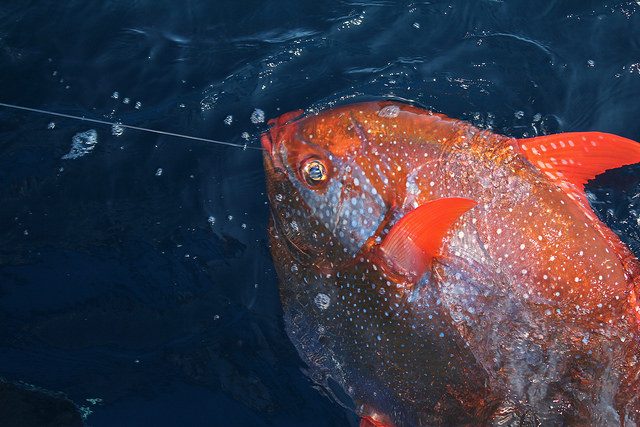Not for the first time, Mother Nature has blown our expectations out of the water (if you will pardon the pun). Looking at the moon-shaped and colourful opah, our first thought is perhaps not that it is an excellent predator, but that is before it reveals its incredible party trick. Caught off the coast of California in a routine survey, biologists at the National Oceanic and Atmospheric Administration (NOAA) decided to look in more detail at the anatomy of this little-studied fish and found something incredible. Unlike most fish, who survive the cold ocean by warming their bodies near the surface, the clever opah can keep its body temperature five degrees Celsius higher than the surrounding water 12. This adaptation allows the fish to hunt all day at depths of up to 1,300 feet and capitalise on the time it takes its peers to warm themselves. A scientific first, this is the only fish which has been found to possess whole-body endothermy, or in other words, the ability to warm the body to ambient temperature.
Previously, scientists had found evidence that some highly active species of fish could warm specific parts of their bodies. For example, some shark and tuna species can heat their swimming muscles to give bursts of speed when in pursuit of prey. They use special nets of blood vessels, which contribute to a phenomenon called ‘counter-current heat exchange’. Warmed-up blood returning from their swimming muscles runs directly alongside cold blood arriving from the gills, allowing the heat to be transferred. Thus, it is not lost to the surrounding chilly water when it reaches the gills like in most fish. However, these bursts of heat cannot be maintained long-term and they must return to more temperate parts of the ocean eventually.
The opah, on the other hand, is thought to create heat by flapping its wing-like red pectoral fins and retain this warmth through a specialised blood vessel system found directly in the gills themselves. As this is the main site for heat loss, isolating it in this way allows their whole body to remain warm, rather than just a few muscles. This net-like blood system, with similar counter-current capacities to that of sharks and tuna, is wrapped up in an extra layer of fat as insulation. The blood in the gills that is cooled by contact with external water is therefore sufficiently warmed before it reaches the organs and rest of the body.
A little-studied and deep-dwelling fish, the opah (or moonfish) has astounded researchers with its capabilities for increased muscle mass, bigger heart and gill area and higher speed than many other similar species. Most of the time, being warm-blooded comes at a price in the oceans, with large marine mammals sacrificing much of their energy to keep up their body temperatures. In this case, opah can very effectively hunt their prey of choice, such as squid and even migrate long distances. It certainly seems that creatures of the deep still have plenty of awe-inspiring features yet to be revealed.
Edited by Debbie Nicol

